Iinuma Crus
Château Brane-Cantenac
Grand Cru Classé en 1855 Margaux Red Bordeaux Blend 2005
I have a six-pack of this 05. I thought after 10 years in bottle, it would be interesting to check in on its evolution. While tasty, I’ll wait another 8-10 to open another. Even after 2-3 hours in the decanter, it’s still a very young adolescent. On the nose, slightly sour blackberries & dark cherries, dark currants, baked black plum, haunting blue fruits, anise, whiff of spice, steeped tea, dry stones, dry crushed rocks with dry top soil, caramel, vanilla with fresh & dry red florals. The body is thick & full. Tannins are starting to round out. It’s velvety on the palate. The fruits are; bright, fresh & ripe and really show the greatness of the 05 vintage. Dark currants, blackberries, dark cherries, baked black plum, haunting blue fruits, baked strawberries, cherries, raspberries on the long set, dark spice, clay & loamy dry top soil with crushed rocks, dry stones, cigar with ash, graphite, dry stems, slight herbaceous character, mint, used leather, clove, caramel, vanilla, fresh & dry red florals with violets. The round acidity is about perfect. The structure and length are still strong. The balance is in harmony. As for the long finish, it’s lush, ruby, rich and well polished. Photos of; Chateau Brane Cantenac, large wood vats, Henri Lurton and Estate vines. Producer notes and history...Chateau Brane Cantenac began in the early 17th century. At the time, the estate was known as Domaine Guilhem Hosten. Even that far back, wine was produced from the property. In fact, the wine was so highly regarded it was one of the more expensive wines in Bordeaux. It sold for almost as much money as Brane Mouton. This is interesting because of who went on to buy the vineyard in the 1800’s. The Baron of Brane, also known as “Napoleon of the Vineyards”, purchased the Chateau in 1833. At the time of the sale, the estate was called Chateau Gorce-Guy. To get the funds needed to purchase the Margaux vineyard, the Baron sold what is now called Mouton Rothschild, which was at the time of the sale, known as Chateau Brane-Mouton. Not such a good move with hundreds of years in hindsight! In 1838, the Baron renamed property taking his name and the name of the sector where the vineyards were located and called it Chateau Brane Cantenac. The Chateau later passed to the Roy family, who were well-known in the Margaux appellation in those days, as they owned Chateau d’issan. Moving ahead to 1920, the Societe des Grands Crus de France, a group of merchants and growers that owned several chateaux located in the Medoc including; Chateau Margaux, Chateau Giscours, and Chateau Lagrange in St. Julien, purchased Chateau Brane Cantenac. Five years later, M. Recapet and his son-in-law, François Lurton, took over Brane Cantenac along with Chateau Margaux. Lucien Lurton (the son of François Lurton) inherited Brane Cantenac in 1956. Today, the estate is still in the hands of the Lurton family. Brane Cantenac is owned and run by Henri Lurton. After being given the responsibility of managing Brane Cantenac, it was under the direction of Henri Lurton that large portions of the vineyard were replanted. Vine densities were increased, the drainage systems were improved and the plantings were also, slowly changed. The vineyard of Brane Cantenac is planted to 55% Cabernet Sauvignon, 40% Merlot, 4.5% Cabernet Franc and .5% Carmenere. Carmenere was used for the first time in the 2011 vintage. The only other Chateau I know that still uses Carmenere is Clerc Milon. The 75 hectare Left Bank vineyard of Brane Cantenac is essentially unchanged since it earned Second Growth status in the 1855 Classification. At least that is the case with the 45 hectares used to produce the Grand Vin of Brane Cantenac. Those 45 hectares are planted surrounding the Chateau. Those vines are located just in front of the Cantenac plateau and are the best terroir that Brane Cantenac owns. They have other parcels, which are further inland and much of those grapes are placed into their second wine, Le Baron de Brane. Those additional hectares can be divided into 3 main sections. Behind the Chateau, they have 15 hectares of vines on gravel and sand, 10 hectares across the road with sand, gravel and iron and a 13 hectare parcel with gravel called Notton, which is used for their second wine. The vineyard is planted to a vine density that ranges from 6,666 vines per hectare on the plateau and up to 8,000 vines per hectare for the vines located behind chateau, in their sandier soils. The higher levels of vine density are always found in the newer plantings. The terroir of Brane Cantenac consists of deep gravel, sand and clay soil. Experiments in the vineyards are currently looking at becoming more organic in their vineyard management. Today, more than 25% of Brane Cantenac is farmed using organic farming techniques. It is expected that over time, the amount of hectares farmed with organic methods will be increased. Brane Cantenac has gone through 2 relatively recent modernization’s in 1999, when they added began adding the first of their smaller vats to allow for parcel by parcel vinification and then again in 2015 when they completed a much more complete renovation of their cellars and vat rooms. While Brane Cantenac is a traditional producer, they are no stranger to technology as they were one of the first estates to embrace optical grape sorting machines. In very wet vintages, they can also use reverse osmosis. To produce the wine of Chateau Brane Cantenac, the wine is vinified in a combination of temperature controlled, traditional, 22 oak vats, 18 concrete tanks and 20 stainless steel vats that vary in size from 40 hectoliters all the way up to 200 hectoliters, which allows for parcel by parcel vinification. 40% of the fermentation takes place in the oak vats. The oldest vines are vinified in vats that are selected to allow for separate parcel by parcel vinification. The younger vines are vinified more often together in the same vats. However, the Carmenere is entirely micro-vinified, meaning that those grapes were completely vinified in barrel, using micro-vinification techniques. This can also happen because the amount of grapes produced is so small. Some vats can be co-inoculated, meaning they go through alcoholic fermentation and malolactic fermentation simultaneously. At Chateau Brane Cantenac, malolactic fermentation takes place in a combination of French oak tanks and barrels. The wine of Brane Cantenac is aged in an average of 60% new, French oak barrels for 18 months before bottling. The initial 2 months of aging is done with the wine on its lees, which adds more depth to the wine. There second wine is Le Baron de Brane. Le Baron de Brane is not new. In fact, previously, the second wine went under the name of Chateau Notton, which took its name from one of the main parcels where the grapes were planted. During the late 1950’s and into the 1960’s, having a second wine was important as the estate declassified 3 vintages, due to extremely poor, weather conditions in 1956, 1960 and 1963. Production of Chateau Brane Cantenac is about 11,000 cases per year. — 8 years ago
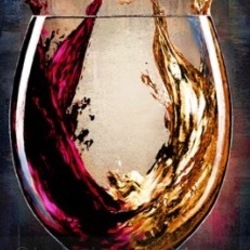
Pascal Doquet
Premiers Crus Brut Rosé Champagne Blend
Savory. Funk. Delicious. — 9 years ago
Caves Des Grand Crus
Vieilles Vignes Pouilly-Vinzelles Blanc 2013
Fruity, buttery lovely wine for a warm summer evening. Light crisp. Nice. — 9 years ago
Château Siran
Margaux Red Bordeaux Blend 2000
Lovely wine still has a few years to go, yet with a bit of air it opens up and show its lovely character. Deep red with light brawn rims, lovely rich nose, black currents, coffee, leather, cassis, chocolate and a touch of tea leaves, full body, dry round tannins,great acidity, lovely mouth filling structure, delicious finish. A truly well made wine that had benefitted for 16 years of aging. My score 90, doing better than some nice grad crus of this vintage. Drink to 2021 perhaps longer. — 9 years ago
Giacomo Borgogno & Figli
No Name Langhe Nebbiolo 2011
Might be the best value in Piedmont. Smooth red fruit and roses. Grapes from 3 Barolo Crus — 10 years ago
Gérard Raphet
Clos de Vougeot Grand Cru Pinot Noir 2002
Gevrey-Chambertin Grand Crus VS Morey-Saint-Denis Grand Crus — 12 years ago
Domaine Dujac
Clos Saint-Denis Grand Cru Pinot Noir 2015
Lovely fragrant perfume. The first of 6 Grand Crus from 2015 tasted blind from Morey-Saint-Denis and Chambolle-Musigny. We knew the identity of the 6 but not the order they were served. Medium bodied flavours and tannins. Grand Cru standard? My score perhaps could have been a little higher. — 7 years ago
10 Barrel Brewing Co
Crus Cucumber Sour
Refreshing, clean tasting — 7 years ago
Bouchard Père et Fils
Vigne de l'Enfant Jésus Grèves Beaune 1er Cru Pinot Noir 2011
Bouchard’s Baby Jésus, the flagship from Bouchard Père & Fils, despite being a house that produces Grand Crus from Montrachet, Bonnes Mares, Echézeaux and Clos Vougeot. It’s from a 3.9 hectare parcel of Beaune-Grèves, possibly the greatest Premier Cru in Beaune, that the Bouchard family bought in 1791 after the French Revolution brought the land from the church to the state. Opens with an extraordinary perfume that foreshadows the intensity and focus to follow. A beautiful and striking contrast of black and red fruit purity slides with ease across the smooth stone minerality. Secondary wildflower and black tea are just present enough to allow delicate tertiary notes of coffee, meat, and underbrush to linger around the lengthy finish. Nothing is concentrated or extracted and yet the intensity is hair-raising. Excellent. — 8 years ago
Domaine Jacques Carillon
Puligny-Montrachet Chardonnay 2014
Closed on day 1, but blossomed beautifully on day 2. Intense lime, floral, and mineral on the nose and palate. Lots of material in reserve, particularly evident on the piercing medium length finish. This is very young, but so promising. Puts some 1er crus to shame. — 8 years ago
Château La Tour de Mons
Margaux Cabernet Sauvignon Blend
1/20/2017: Degustation CA Grand Crus — 9 years ago
Domaine Vincent Dampt
Chablis Chardonnay
Yummmm. Montrio in Monterey is rocking some great wines. This one from my buddies at balanced wine selections... stunning stuff. Lots of citrus, brimming with acidity. Mandarin orange like the little hard candied kind. Great length and way better than most villages. Sits between a couple premier crus (lechet and sechet).::: nice — 9 years ago
Henry Fessy
Brouilly Crus du Beaujolais Gamay 2013
Underrated region, OK wine — 9 years ago
Pascal Doquet
Premiers Crus de la Côte des Blancs Champagne Chardonnay
Lots going on with this - don't think I've had a blanc de blanc quite like this before. Really good! — 10 years ago
Pascal Doquet
Premiers Crus Brut Blanc de Blancs Chardonnay 2002
So glad I brought this back from France. 2002 on this is a clean finish. Wow!! — 10 years ago
Les Vignerons des Crus Faugères
Parfum de Schistes Faugères Red Blend 2012
Starts off a little strong but really opens up after the first glass. — 11 years ago
Château Gloria
Saint-Julien Red Bordeaux Blend 2011
One of the better-known Crus Bourgeois of the Medoc.
Had another ‘11 in cellar. Dark Ruby with aromas of black and blue fruits with tobacco spice. Palate displays blueberry and blackberry with cacao and earthy herbs. Smooth characteristics, well balance full body wine with velvet tannins. Not a satisfying wine. Prrfect now. Consistent wine! — 7 years ago
Domaine William Fèvre
Vaulorent Chablis 1er Cru Chardonnay 2014
2014 - one of the better 1er crus — 8 years ago
Domaine Denis Mortet
Mes Cinq Terroirs Gevrey-Chambertin Pinot Noir 2014
On the nose, sweet, floral, dark cherries, touch of plum, black raspberries, raspberries, red licorice/cola, lovely funk, canopy leaf, perfumed red florals and fine, sexy, chalky minerality. The mouthfeel is beautifully crisp...medium body. The fruits are bright and tantalizing. Strawberries, dark cherries with Rainer cherries blended in, cranberries, pomegranate, plum, black raspberry, raspberries, soft, super fine powdery chalkiness, crushed dry rock powder, light beautiful spice, red florals with a touch of violets, perfect acidity and a well balanced, polished finish. Photos of, the property entrance, Chevrey Chambertin vineyard and Arnaud. History and producer notes...Domaine Denis Mortet was founded by Denis Mortet in the early 1990s. Strangely, he took his own life at the age of 51 in 2006. He started with modest holdings to become a very well respected Winemaker in Burgundy with his 1993 wines. His son Arnaud has now taken over. The estate vines are relatively young at 25 years. The Domaine's 10 hectares encompass 14 different Appellations, including two Grands Crus in Clos-de-Vougeot and Chambertin. All their wines including their village wines see new oak. This wine is a blend of all their Chambertin holdings and fermented in around 30% new oak. — 8 years ago


Château Grand-Puy Ducasse
Pauillac Red Bordeaux Blend 2010
1/20/2017: Degustation CA Grand Crus — 9 years ago
Denis (Isabelle et Denis) Pommier
Fourchaume Chablis 1er Cru Chardonnay
2014
Organic: Practicing
Vineyard: Fourchaume is a 250 acres (100 Ha) vineyard, planted to the left of the Grand Crus. It is arguably the most recognizable and highly reputed of the Chablis 1er Crus.
Orientation: West/Southwest
Soil: Kimmeridgien - limestone
Viticulture: AgriBio certified since 2010. Farms organically and manually works the soils. Grapes are harvested in small cases of 15 kg and are immediately pressed.
Vinification: Alcoholic and malolactic fermentation in 50% tank and 50% neutral barrels of varying age.
Aging: Blended wines are aged on the lees for 18 months in combination of vats and barrels.
Notes: Fourchaume produces wines that are distinctly floral and fruity, possessing minerality and delicacy.
RATINGS
Publication: Burghound
Rating: 91
(from Fourchaume and Vaupoulent). A deft but not invisible application of wood set off ripe and fresh aromas of green fruit, pear, apple and quinine wisps. There is excellent richness and volume to the sappy, lush and textured medium weight flavors that possess both good punch and focused power, all wrapped in a clean, dry and ever-so-mildly austere finale. Lovely and a relatively elegant example of the cru. 91/2020+
Publication: Vinous
Rating: 91
Pale, bright yellow. Deeply pitched, youthfully subdued nose hints at nectarine, caraway seed and mint. The most intensely flavored of these 2014s, showing firm acidity and saline minerality for this often exotic premier cru. Offers an enticing balance of citrus and stone fruit flavors and salty lift and finishes with very good subtle length and sneaky energy. — 9 years ago
Vincent Dauvissat
La Forest Chablis 1er Cru Chardonnay
Made it to Chablis ate at bistro de grands crus wonderful lunch and wine was just what doctor ordered. A little light but after driving 2 hours was refreshing and perhaps needed more time to open. — 10 years ago
Henry Fessy
Crus Du Beaujolais Fleurie Gamay 2011
Pinot drinkers should give Beaujolais Cru some attention. This one has that cassis and funk going on. Medium bodies with smooth tart cherry finish. For only $15, it's a wine with a lot of character and depth. — 10 years ago
Taittinger
Limited Edition Grand Crus Brut Champagne Blend 2000
New Years Eve treat. — 12 years ago



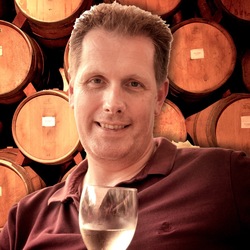


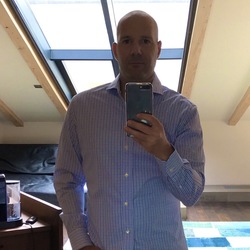

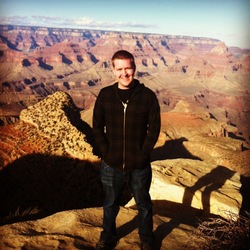


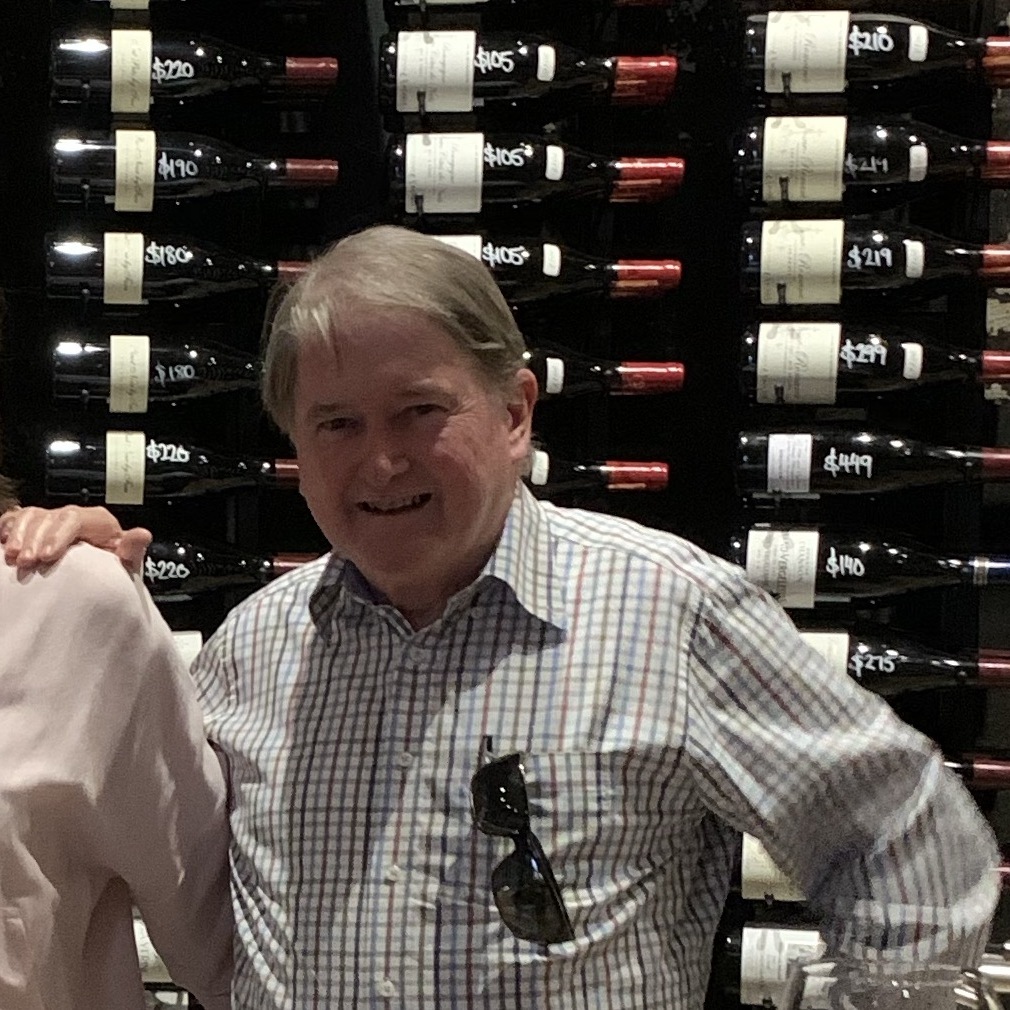


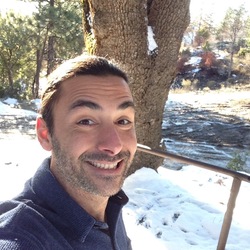
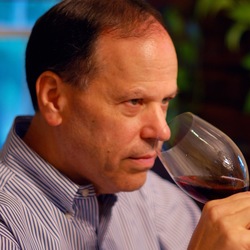






Bob McDonald
Wine #4 from 6 Grand Crus from Morey Saint Denis & Chambolle Musigny. Delectable this is the Comte de Vogue Musigny. Closed Nose at this young age. Also showing restraint on the sweetish palate. Fine tannins. A very long way to go. Showing that little bit extra that defines Musigny. Too early to appreciate how good this will finally be. 95 points now but 98 or 99 in the future. — 7 years ago